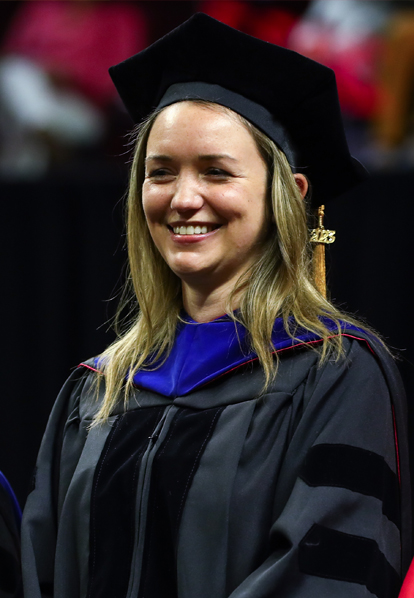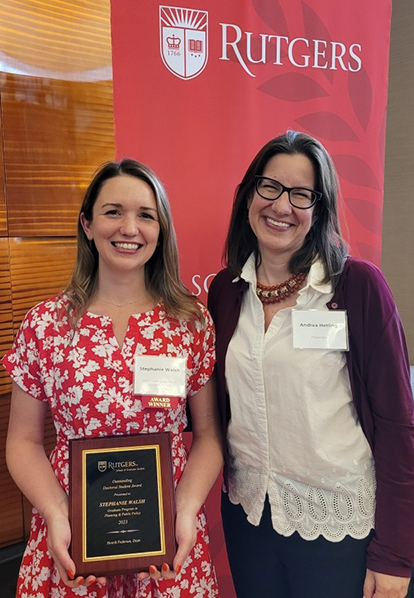
Stephanie Walsh, MPP ’16, Ph.D. ’23 is one of four Ph.D. students awarded the Outstanding Doctoral Student Award by the Rutgers School of Graduate Studies for her dissertation, “Analyzing and Improving Social Safety Net Access.”
The award recognizes excellence in doctoral research and scholarship across all disciplines at Rutgers University as well as the importance of research to a given field of study and a track record of academic and professional excellence.
Stephanie is currently a Research Project Manager at the Heldrich Center for Workforce Development, where she conducts program evaluations and labor market analyses. She is involved in research on workforce development, education and training, and program evaluations, and is the director of the New Jersey Statewide Data System.

Her dissertation explores topics related to administrative burden and its role in varying safety net participation rates. Due to means-tested requirements, administrative burdens are an unavoidable component of the social safety net as it is currently structured in the United States. Despite this composition, and because it is incumbent upon public agencies to ensure these processes are not overwhelming, it is necessary to understand how the complex administrative processes and required documentation shape program access. This is particularly important for two primary safety net programs which each have a history of serving fewer than all who are eligible, Temporary Assistance for Needy Families (TANF) and the Supplemental Nutrition Assistance Program (SNAP).
The dissertation explores three topics in three separate papers. The first paper presents findings from interviews with those receiving SNAP but not TANF to better understand the differences in administrative burden between the two key programs. The second paper develops a county-level index to assess TANF participation among counties in New Jersey. Finally, the third paper uses a survey experiment to test the effect of different communication methods on SNAP program comprehension. Together these analyses form a contribution to the literature showing differences in program access, offering a way to measure and monitor local variation in access, and begin a framework for assessing the efficacy of outreach to reduce such burdens associated with access.
Her dissertation adviser is professor Andrea Hetling.
